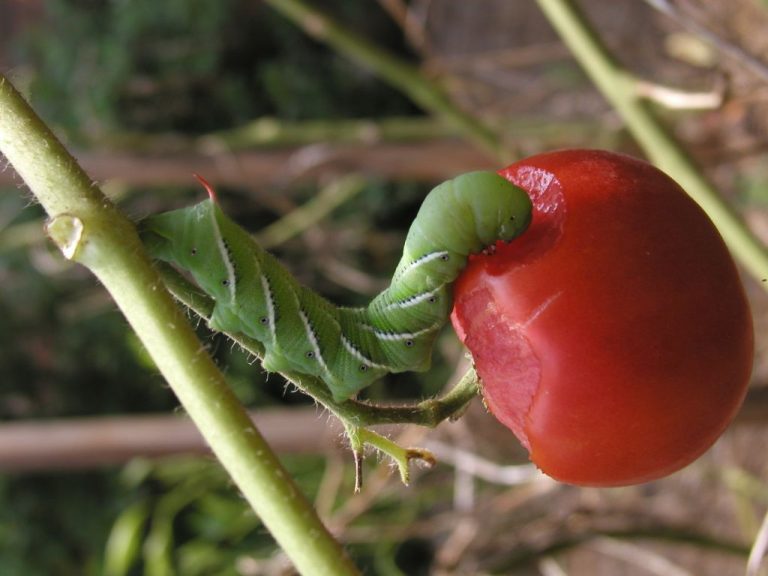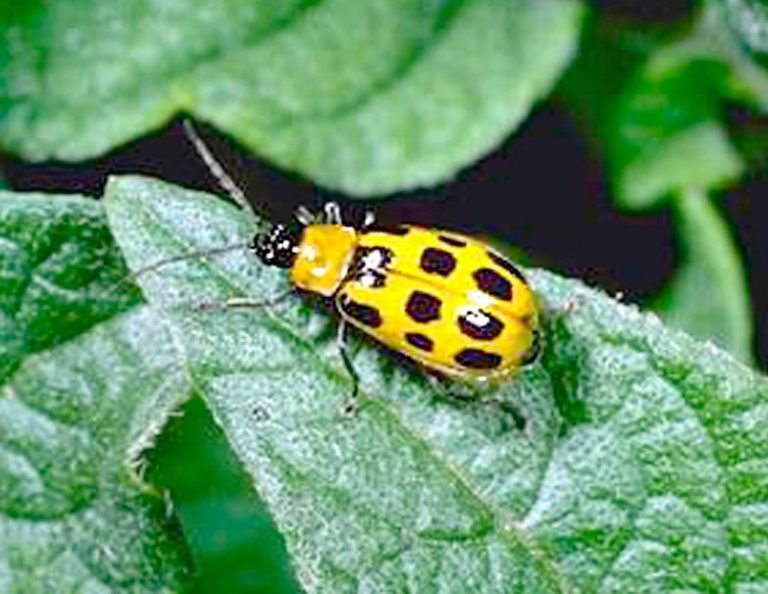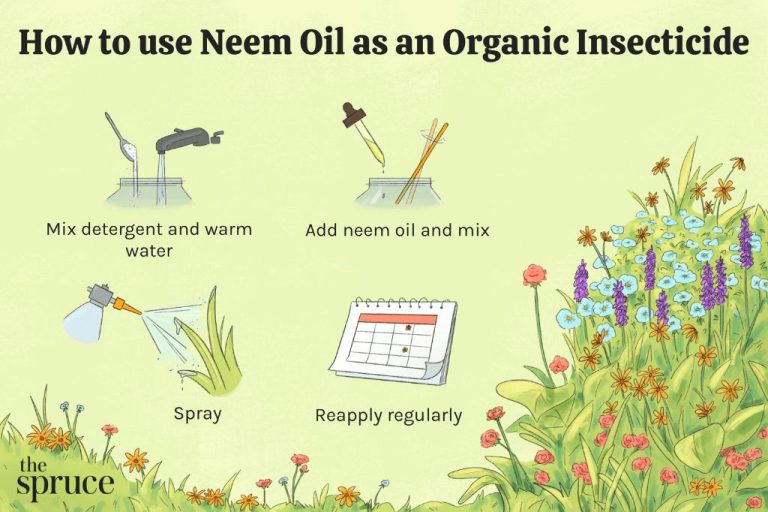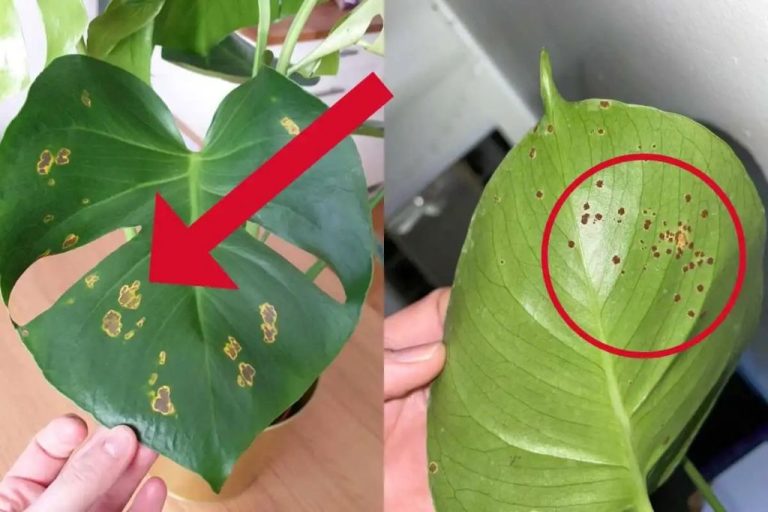Combatting Tomato Hornworms: Protecting Your Tomato Plants
Tomato hornworms (Manduca quinquemaculata) are green, plump caterpillars that can wreak havoc on tomato plants. They have eight V-shaped white markings along their sides and a prominent horn on their rear end, giving them their name. Tomato hornworms use their strong mandibles to voraciously chew through leaves, stems, flowers, and fruits of tomato plants, dramatically reducing yields.
A single hornworm can defoliate an entire tomato plant in less than a week. They move quickly and can devour leaves faster than the plant can recover. Extensive feeding damage causes tomatoes to ripen prematurely and stops fruit production. If left uncontrolled, hornworms can quickly destroy an entire tomato crop. That’s why it’s crucial for home gardeners to control these hungry pests.
This article will cover how to identify tomato hornworms, their life cycle, when they are most active, and effective organic and chemical control methods. With vigilance and prompt action, tomato gardeners can protect their plants from damage.
Identifying Tomato Hornworms
Tomato hornworms (Manduca quinquemaculata) are the larval form of the five-spotted hawk moth. They are large caterpillars that can reach up to 4 inches long when fully grown. Their bodies are green with eight white V-shaped markings along the sides and diagonal white lines on the back. They have a reddish-brown head capsule and a spine-like horn that protrudes from the rear end, giving them a distinct appearance.
In their early larval stages, tomato hornworms are small and dark in coloration with faint white markings. As they mature through 5-6 instars, their color lightens to green and the white V-shaped markings become more pronounced. When they are ready to pupate, the hornworms stop feeding and their color fades. Distinctive white dots that look like “rice grains” appear on their sides as the larvae prepare to form cocoons [1].
It’s important to distinguish tomato hornworms from tobacco hornworms (Manduca sexta), which look nearly identical except they have seven diagonal white stripes instead of eight. The tobacco hornworm is also a common tomato pest. Other large green caterpillars like cabbage loopers may sometimes be mistaken for tomato hornworms, but lack the distinctive horn-like tail.
Hornworm Life Cycle
The hornworm goes through four stages in its life cycle: egg, caterpillar/larva, pupa, and moth. Here’s an overview of each stage:
Eggs: Adult female moths lay eggs on the undersides of tomato plant leaves in late spring or early summer. The eggs are small and spherical, usually white or yellowish in color. They hatch in about a week.
Caterpillar/Larva: After hatching, the eggs develop into large green caterpillars with white V-shaped markings and horn-like appendages on the rear. These are the damaging larval stage that feeds on tomato plants. The larvae grow quickly, shedding their exoskeletons several times over 2-3 weeks before reaching full size (up to 4 inches long).
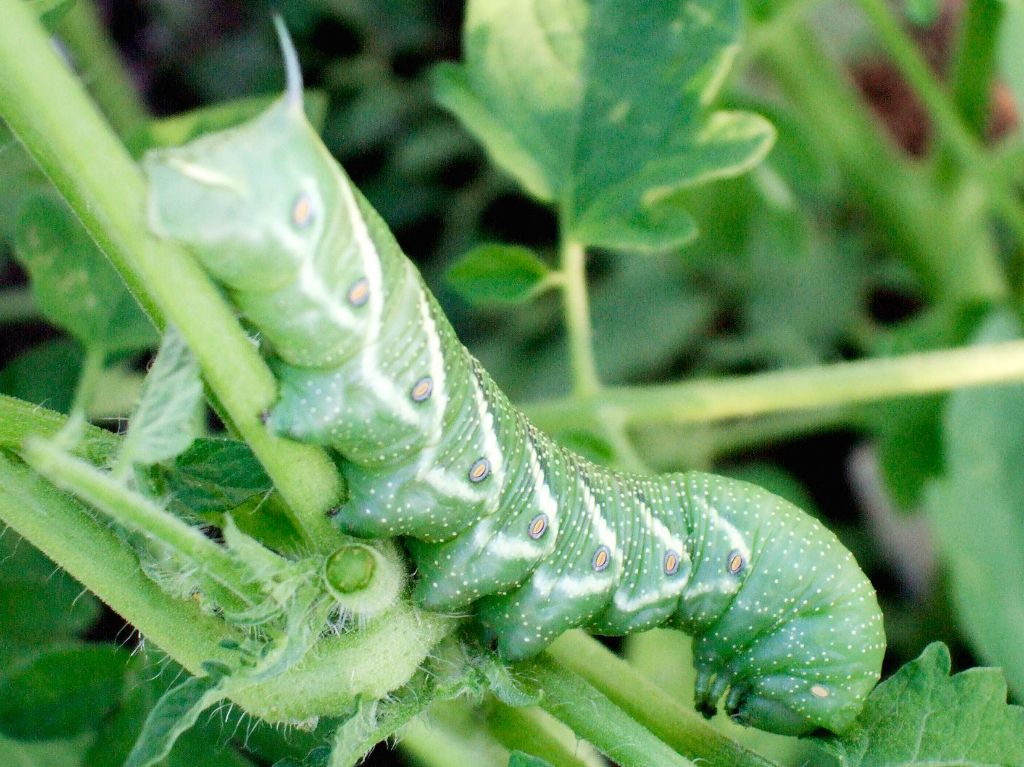
Chrysalis: Once fully grown, the caterpillars stop feeding and burrow into soil where they form an underground cocoon or chrysalis. Inside the chrysalis the caterpillar transforms into the pupal stage over 1-2 weeks.
Moth: Adult moths emerge from the chrysalis after 1-2 weeks. They have gray-brown wings with darker wavy bands across them. After mating, female moths lay eggs on tomato plants to start the cycle again. The moths live around 2 weeks. See pictures of the hornworm lifecycle stages at https://extension.umn.edu/yard-and-garden-insects/tomato-hornworms.
When Are Hornworms Most Active?
Tomato hornworms are most active and do the most damage to plants during the summer months. According to the University of Minnesota Extension, peak activity occurs in July and August (source 1). They feed voraciously during this time as they go through their larval stage.
The hornworm life cycle begins in spring when eggs laid the previous season hatch into larvae. They grow rapidly through 4-6 weeks of feeding before forming cocoons to pupate. Hornworms overwinter as pupae in the soil and emerge as adult moths the following summer (source 2). So while hornworm damage is at its worst during summer, prevention measures should begin in spring before larvae hatch.
Gardeners in most regions of the U.S. should be on the lookout for hornworms from May through September. Their peak feeding period is relatively short, so diligent scouting and prompt removal of larvae can prevent major losses.
Where to Find Hornworms on Plants
Hornworms can be tricky to spot since they blend in well with tomato plant foliage and stems. Here are the key places to check when scouting for these pests:
Undersides of leaves – Hornworms like to feed on the underside of tomato leaves where they are more hidden. Carefully flip leaves over and inspect for any caterpillars, holes, or frass (worm poop).
Stems – Hornworms will climb up tomato plant stems to reach upper leaves and branches. Check the main stem and any stems bearing leaves or fruit. Look for any caterpillars clinging to the sides.
Hiding spots – Hornworms are adept at hiding during the day. Search where leaves meet stems or inside curled up leaves. Also look under the cover of dense foliage. Disturbing these spots may cause any hidden hornworms to move.
When scouting, check plants thoroughly as hornworms can quickly go unnoticed. Inspect both upper and lower leaves as well as the main stems. Hornworm damage usually appears before sighting the caterpillars themselves.
Preventing Hornworm Damage
There are several organic and preventative measures you can take to prevent damage from tomato hornworms:
Practice crop rotation each year, as hornworms overwinter in the soil and can emerge near established host plants like tomatoes, peppers, eggplants and potatoes. Rotating plant families in different areas of your garden can disrupt their lifecycle (Source).
Inspect plants closely and handpick hornworm eggs, which are easy to spot on the undersides of leaves. They are spherical and transparent at first, yellowing with age. Removing them early prevents larvae from hatching and feeding on your plants.
Check susceptible plants frequently, at least every other day. Early detection of young larvae allows you to control them before they cause significant defoliation. Target hornworms when small for easier removal (Source).
Organic Hornworm Control
There are several organic methods to control tomato hornworms without using harsh chemical pesticides.
Hand removal is one of the most effective organic control methods. Check plants frequently and pick off any hornworms you find. Crush them or drop them into a bucket of soapy water to kill them. Be sure to check the undersides of leaves and stems where hornworms like to hide.
Natural predators like wasps, spiders, praying mantises, birds, and beneficial insects will also help control hornworm populations. Avoid using broad-spectrum insecticides that may kill these beneficial insects. You can also purchase trichogramma wasps that parasitize hornworm eggs.
Bt (Bacillus thuringiensis) is an organic insecticide containing bacteria that is toxic to hornworms but safe for people and pets. When hornworms ingest Bt, it damages their digestive system and causes them to stop feeding. Bt works best on young hornworm larvae less than 2 inches long. Products containing Bt can be sprayed evenly on plants according to label instructions.
Neem oil is another organic option made from extracts of the neem tree. It smothers and disrupts the life cycle of hornworms. Mix neem oil with water and a small amount of soap. Then spray all parts of tomato plants, including tops and undersides of leaves where hornworms may hide. Reapply after rain.
For sources see: https://www.growveg.com/guides/organic-tomato-hornworm-control/ and https://www.planetnatural.com/pest-problem-solver/garden-pests/tomato-hornworm-control/
Chemical Insecticide Options
While organic options are preferable for an eco-friendly garden, chemical insecticides can provide fast and effective control of infestations when used properly.
The most common chemical insecticides used against tomato hornworms contain active ingredients like carbaryl, Spinosad, permethrin, or Bacillus thuringiensis var kurstaki (Btk). Always carefully follow label directions for correct dilution and application methods.
Some considerations when using chemical insecticides:
- Insecticides can kill beneficial insects like bees and ladybugs, so avoid spraying them directly.
- Repeated applications may be needed for heavy infestations. Wait the recommended reapplication interval before respraying.
- Carbaryl is toxic to humans, pets, wildlife, and aquatic life. Take care when handling and apply only to affected plants.
- Permethrin is highly toxic to bees, fish, and aquatic life. Do not spray directly into bodies of water.
- Spinosad and Btk have lower toxicity to mammals but may still impact bees or aquatic life. Spray plants directly rather than broadly.
Always wear protective clothing and follow label safety directions when mixing or spraying insecticides. Avoid spraying right before rain storms. Spot treatment of affected plants is preferable to blanket spraying of your whole garden.
Common application methods include ready-to-use hose-end sprayers, tank sprayers, and handheld spray bottles. Spray insecticides directly on infested plants, especially under leaves where hornworms hide. Repeat applications may be needed every 1-2 weeks during peak feeding times.
While chemical insecticides offer quick knockdown of hornworms, also consider incorporating organic control methods that encourage healthy plants and beneficial predators in your garden habitat.
Companion Planting Strategies
Certain plants can be interplanted with tomatoes as companion plants to help deter pests like hornworms. Basil is one of the best companion plants for tomatoes. Its strong scent confuses and repels many pests, including hornworms. Planting basil next to your tomatoes can reduce hornworm damage.
Other beneficial companion plants include borage, oregano, marigolds, garlic, chives, and parsley. These herbs and flowers emit odors that naturally repel hornworms. Interplant them throughout the tomato bed. Be sure to leave enough space between plants for adequate airflow and sunlight penetration.
When interplanting, mix up the layout so aromatics are distributed evenly. Plant in a checkerboard pattern, alternating tomatoes with companion plants. Or plant aromatics on the ends of rows bookending the tomatoes. Aim for companion plants to make up about 20% of the overall vegetable bed.
Companion plants like marigolds can also attract beneficial insects that prey on hornworms, like ladybugs. Combining repellant plants alongside plants that attract predators can provide multiple lines of defense against these damaging tomato pests.
Some key companion planting pairings to try:
- Tomatoes & basil
- Tomatoes & borage
- Tomatoes & marigolds
- Tomatoes & garlic/chives
When to Call a Professional
In cases of severe tomato hornworm infestations that are rapidly defoliating plants, it may be best to call in a professional pest control company. According to the University of California Integrated Pest Management program, hornworm populations in commercial tomato fields are often managed through biocontrol methods and crop rotation, but chemical insecticides may also be warranted for rapid knockdown of high pest numbers (https://ipm.ucanr.edu/agriculture/tomato/hornworms/).
If you have diligently tried organic and natural control methods but are still losing the battle against hornworms, expert intervention may be required. Some regional pest control companies specialize in environmentally-sensitive hornworm management for home growers and small farms. They have access to effective pesticides that homeowners can’t purchase, and know how to minimize risks to pollinators and natural enemies in your garden.
The key is contacting them as soon as possible once an infestation surpasses your capacity to control. The longer you wait, the more damage the hornworms will do. A swift, strategic insecticide application by a professional can nip even heavy infestations in the bud and save your plants. Just be sure to hire a reputable company that backs its service with a satisfaction guarantee (https://www.arbico-organics.com/category/tomato-hornworm-control).

